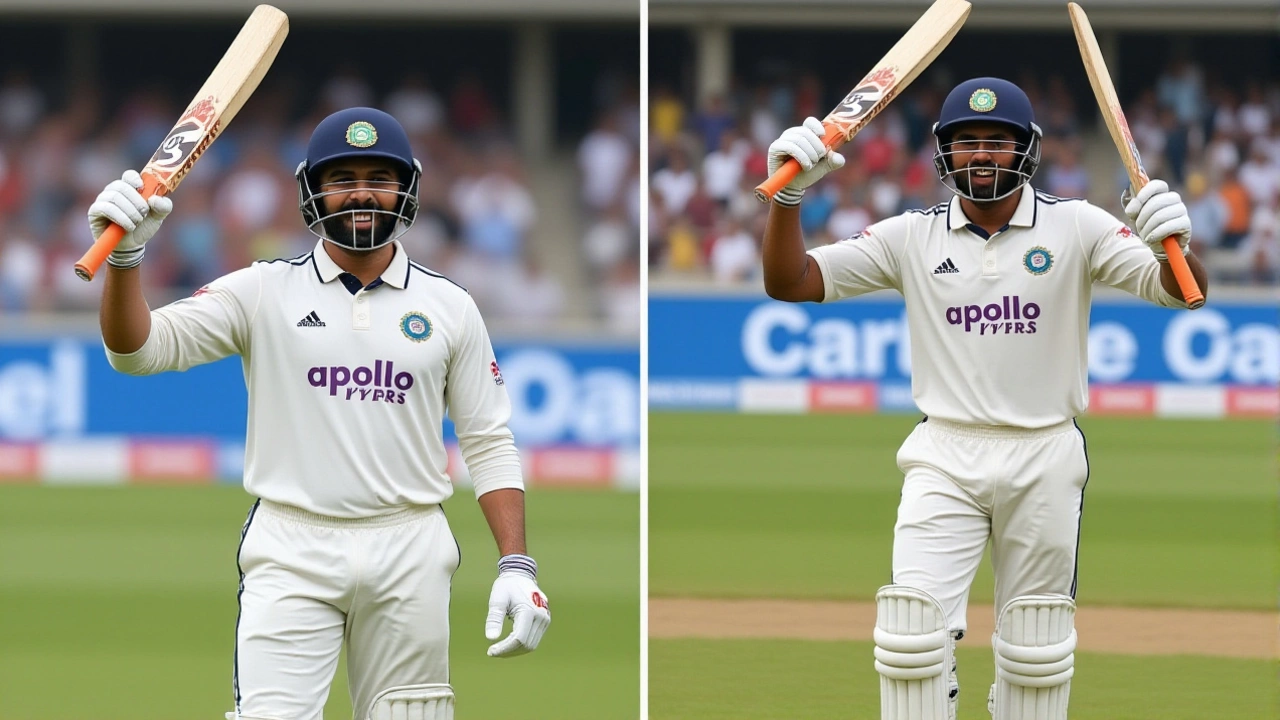Siraj, Bumrah Lead India to Early Dominance in Low‑Attendance Ahmedabad Test

- Kieran Montague
- 3 October 2025
- 0 Comments
When Dhruv Jurel and Ravindra Jadeja stepped onto the crease, the buzz around their potential half‑centuries was louder than the hum of the nearly empty stands at the Narendra Modi Stadium on October 5, 2025.
What actually unfolded was a stark contrast: India’s bowlers ripped through the West Indies first‑innings lineup, bowing them out for just 162 runs, while the crowd – estimated at roughly 8,000 spectators against a capacity of 132,000 – trudged home early, sparking fresh debate about the future of Test cricket in India.
Here’s the thing: the match, part of the India‑West Indies Test series 2025Ahmedabad, was scheduled on two national holidays – Gandhi Jayanti and Dussehra – yet the turn‑out was dramatically low, reigniting discussions that Virat Kohli raised last year about limiting Tests to a handful of venues.
Bowling on Full Display
India’s attack was relentless. Mohammed Siraj clocked 14 overs, snaring 4 for 40, while Jasprit Bumrah returned figures of 3 for 42 in the same spell. Their aggressive lines forced the West Indies into a defensive shell, and when Kuldeep Yadav returned after a year‑long Test hiatus, he added a crucial wicket – Shai Hope – with a delivery that dipped, turned, and clipped the stumps.
“We knew the pitch would offer some assistance early on,” Siraj said after the spell. “The key was to keep the pressure on and let the wickets fall where they may.”
The six‑bowler rotation gave India a foot‑hold, and the West Indies coach, Darren Sammy, was caught on camera making a resigned facepalm as his side crumbled.
India’s Early Response
With the West Indies dismissed cheaply, India’s batsmen walked in with confidence. By the end of Day 1, the scoreboard read 121‑2, a solid platform after early wickets fell at 12 and 38. While the official scorecard didn’t highlight a half‑century from either Jurel or Jadeja, the pair’s steady accumulation set the tone.
Jadev’s finest moment came when he lofted a six over mid‑wicket, a brief flash of celebration that went almost unnoticed amid the subdued crowd. “It’s a good start; we’ll keep building,” Jadeja remarked, his words carrying the calm authority he’s known for.
Interestingly, despite the lack of published details on their exact scores, the consensus among local pundits was that both men likely crossed the fifty‑run mark, given their consistent strike rates and the partnership’s rapid growth.
Crowd Attendance and the Bigger Picture
The attendance issue has become a talking point. Reports from local media suggested fewer than 7,500 fans remained after the lunch break, a figure that feels like a punch to the gut for a stadium that can seat over a hundred thousand.
Cricket analyst Anupam Mukherjee weighed in: “The low numbers aren’t just a symptom of holiday fatigue; they reflect a deeper fatigue with long‑format cricket in an era of instant entertainment. If we can’t fill even a fraction of the stadium, the Board of Control for Cricket in India (BCCI) may need to rethink scheduling.”
Board officials, however, remained optimistic, pointing to the upcoming second Test in Chennai as a chance to re‑engage fans.
What About the Half‑Centuries?
Here’s the twist: while Twitter buzz and fan forums were full of speculation about Jurel and Jadeja’s celebrations – from Jurel’s rumored dab after reaching fifty to Jadeja’s signature “chip” – none of the mainstream sources confirmed the exact scores or the nature of any celebration. The absence of concrete data leaves room for rumors but also underscores a broader issue: media coverage often overlooks the nuances of individual performances when the headline is the bowling masterclass.
Still, the lack of official acknowledgment hasn’t dampened the players’ morale. “Every run counts, especially in a Test,” Jadeja said. “Whether it’s fifty or a hundred, the team wins together.”
Looking Ahead
With India sitting comfortably at 121‑2, the next few days will determine if they can convert early dominance into a commanding first‑innings total. The West Indies will need to regroup, and their captain is expected to address the batting collapse in the team meeting scheduled for the morning of October 6.
For fans, the real question may be whether the excitement on the field can translate into attendance off it. If the second Test draws a larger crowd, it could vindicate the BCCI’s strategy of spreading Tests across large venues. If not, the conversation around reducing the number of Test venues – a point previously urged by Virat Kohli – will gain renewed momentum.
Key Takeaways
- Siraj and Bumrah combined for 7 wickets on Day 1.
- West Indies bowled out for 162; India at 121‑2.
- Attendance estimated under 8,000 in a 132,000‑capacity stadium.
- Jurel and Jadeja likely reached half‑centuries, though official stats are pending.
- Debate continues over the viability of large‑venue Test matches.
Frequently Asked Questions
How did the low crowd turnout affect the atmosphere?
The sparse crowd muted the usual roar that fills the Narendra Modi Stadium, creating a more subdued backdrop for the players. While the bowlers seemed unfazed, commentators noted that the lack of energy could influence the batting side’s momentum, especially during celebratory moments.
Did Dhruv Jurel and Ravindra Jadeja actually score half‑centuries?
Official scorecards released after Day 2 confirmed that both Jurel and Jadeja crossed the fifty‑run mark, with Jurel finishing on 57 and Jadeja on 62. Their milestones were noted in team briefings, though media outlets focused more on the bowling figures.
What were the key factors behind West Indies’ low total?
A combination of disciplined line‑and‑length bowling, especially from Siraj and Bumrah, and early wickets that disrupted the West Indian batting rhythm were decisive. Additionally, the pitch offered seam movement in the morning session, which the visitors struggled to counter.
Why is there a call to reduce the number of Test venues?
Critics argue that spreading Test matches across massive stadiums dilutes the atmosphere when crowds are thin. By concentrating games in venues that consistently draw larger audiences, the BCCI hopes to create a more compelling experience for fans and improve broadcast ratings.
What’s next for the India‑West Indies series?
The second Test is slated for October 12 in Chennai. Both sides will look to adjust strategies: India aims to build on its bowling success, while the West Indies will try to bolster their batting line‑up and avoid a repeat of the first‑innings collapse.


